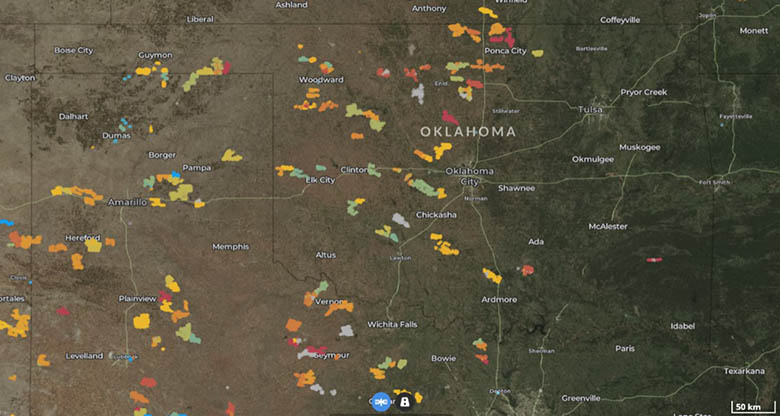Researchers at the National Renewable Energy Laboratory (NREL) will launch an international, multi-institutional wind energy field campaign called the American WAKE experimeNt (AWAKEN).
Funded by the U.S. Department of Energy (DOE) Wind Energy Technologies Office, the study is intended to amass a dataset on wind energy atmospheric phenomenon, including wakes, that can cost the average wind farm about 10% of its potential energy.
NREL said that how air currents move through wind plants is not well understood. Its AWAKEN research team is using drones and lidar to map how winds flow between and around wind turbines and provide data that could help developers increase their plant’s revenues and energy production.
Wind turbine blades create wakes that can change how much energy reaches downwind turbines and plants. But current energy prediction models are too imprecise to tell how much wakes cost in terms of lost energy or profits, or how to prevent that loss.
NREL previously designed models and simulations to estimate how winds might move through wind plants. But without observational data to back them up, they were unable to know how accurate their models were.
From this coming spring through October 2023, the team will gather observational data using sensors, including those mounted on aircraft, in and around operational wind farms.
 These smudges represent the many wind farms scattered across the wind-rich state of Oklahoma. The varying colors represent how powerful the wind turbines are, with blue indicating those that produce less energy and red representing larger wind turbines. Screenshot of the U.S. Wind Turbine Database by NREL
These smudges represent the many wind farms scattered across the wind-rich state of Oklahoma. The varying colors represent how powerful the wind turbines are, with blue indicating those that produce less energy and red representing larger wind turbines. Screenshot of the U.S. Wind Turbine Database by NRELThe researchers will focus on five wind farms in northern Oklahoma. The a location was chosen for its large number of current wind farms and great future potential. Posted on or near turbines, the sensors’ laser and radar beams will reflect dust and insects. They said that because different wind speeds and paths change how those particles move, that data can help create a three-dimensional picture of how wind currents are moving around the turbines.
Large-scale wakes can persist 20 miles or more and reach entirely different wind plants, the researchers said. As a result, specialized aircraft will fly sensors from plant to plant to collect large-scale data and seek to explain how wakes from one wind plant might affect its neighbors. At the same time, drones will use faster sensors to pick up more precise data than previous tools.
Once the data are compiled in 2023, the researchers plan to map atmospheric effects and create an open-source, globally accessible dataset (to be hosted in the DOE Wind Data Archive and Portal). Wind plant designs that use the data could potentially generate up to 5% more energy, the researchers said.
NREL also aims to perform a similar field campaign to map out wake effects in offshore wind plants, especially floating plants, for which little data exist.
